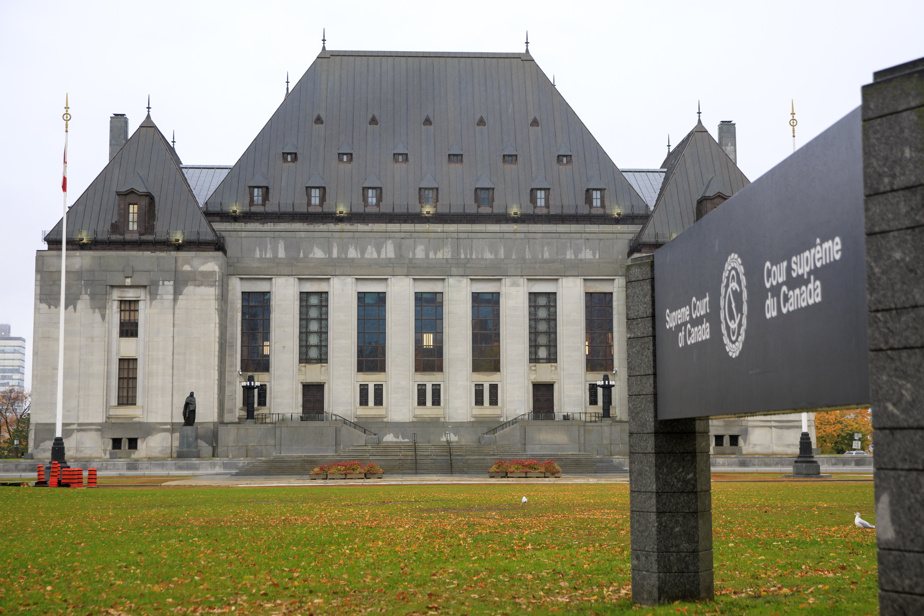(Ottawa) 1– What is the case about?
The appellants are nationals of El Salvador, Syria and Ethiopia who were deported to the United States after arriving in Canada through an official border crossing – so there is no question here of ports of entry not official like Roxham Road. The groups that have argued the case on their behalf believe that these referrals violate section 7 of the Canadian Charter of Rights and Freedoms ensuring “the right to life, liberty and security”, as migrants run the risk of being detained in the United States, or even deported to the country of origin from which they fled.
2- What is the position of the federal government?
As expected of them, federal lawyers defended the Agreement signed in 2002 last October during the hearing before the Supreme Court. “It is not a question of a return to the country of persecution, insisted Me Marianne Zoric. With a democracy like the United States, it must be assumed that the judicial system is fair and just. Judge Malcolm Rowe had made similar comments. “Are you saying that we can no longer deport a person in a country of 350 million inhabitants where more than 2 million people arrive illegally each year, because a handful of people are not treated adequately? “, he had launched to the lawyer of the Canadian Council for Refugees.
3– What will happen if the Supreme Court declares the Agreement unconstitutional?
Good luck who knows the answer to this question. “Once the decision is made, Immigration, Refugees and Citizenship Canada will review the results and determine next steps. We have no other information to communicate at this time,” wrote Rémi Larivière, spokesperson for the Ministry. In short, the government does not want to say a word about the contingency plans it has developed, if any. “If that happens, and that’s a big ‘if’, nothing will happen the next morning. The Court would give the government leeway to adjust,” notes law professor Joao Velloso of the University of Ottawa.
4– What are the chances of this happening?
They are thin, says – cautiously – Hélène Mayrand, full professor at the Faculty of Law of the University of Sherbrooke. “The Federal Court of Appeal had said that was the wrong way to attack the Agreement, that the appellants should have attacked it from an administrative point of view rather than with the Charter,” he explains. -She. I think the main role of the Supreme Court will be to clarify what the right remedy is. In short, do not expect a bomb: “I think it will be very disappointing for the general public, but that law professors and lawyers in the field will all watch with great interest”, summarizes Mme Mayrand, recalling that this is the third time that the pact has been challenged in court.
5– What will happen if the Court determines that the Agreement complies with the Charter?
This one is easier: everything indicates that we will move forward with the new frame of reference of the agreement reviewed and corrected during Joe Biden’s visit to Canada, under which the Agreement applies along the border, and that 15,000 migrants from the western hemisphere will be welcomed into Canada in one year. Almost three months later, the provisions of the policy are yet to be finalized, Immigration Minister Sean Fraser admitted on Tuesday. “There are still elements to be clarified, for example to see how we can encompass both humanitarian and economic issues in a program that would have the potential to become broader,” he said. I may have the opportunity to visit my counterparts in Washington next week, it will depend on the schedule in the House of Commons,” Mr. Fraser added.
6– By the way, how has the situation evolved at the irregular entry points?
In a radical way. As we have said, the decision of the Supreme Court does not concern the breach that came to plug the overhaul of the agreement. But we only have to skim over the figures provided by the Royal Canadian Mounted Police to see how much the situation has changed: in April 2023, there were 85 interceptions, including 69 in Quebec. As of April 2022, there were 2,805. The Canada Border Services Agency processed 618 applications between designated ports of entry between March 25 and May 28. In 2022, for the months of April and May, there were 7465.
